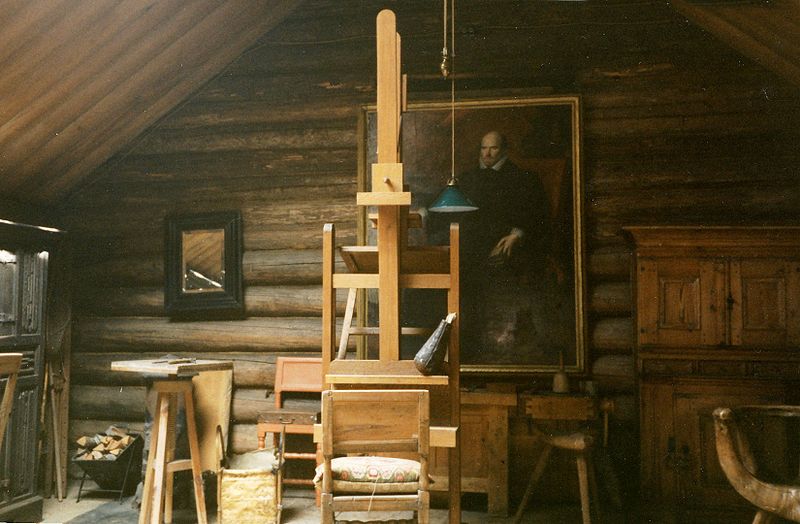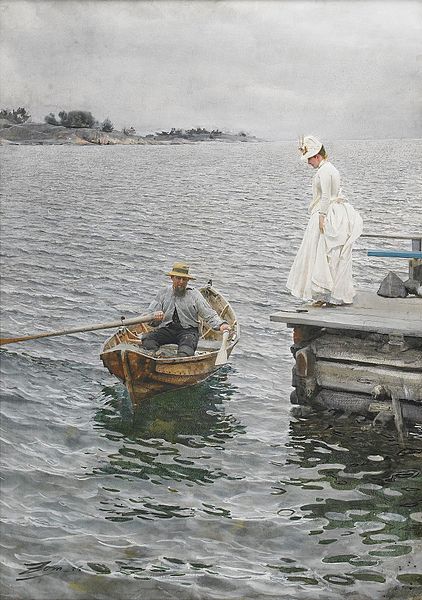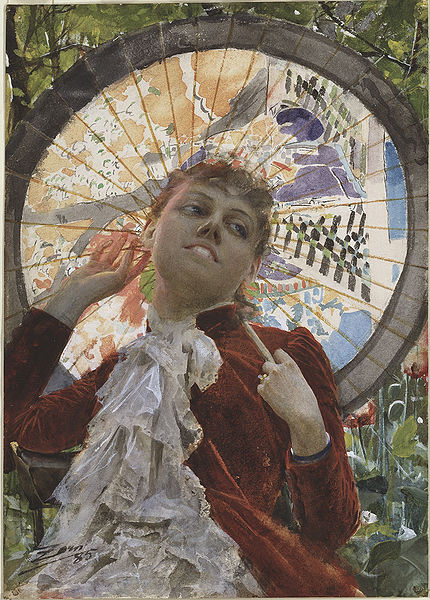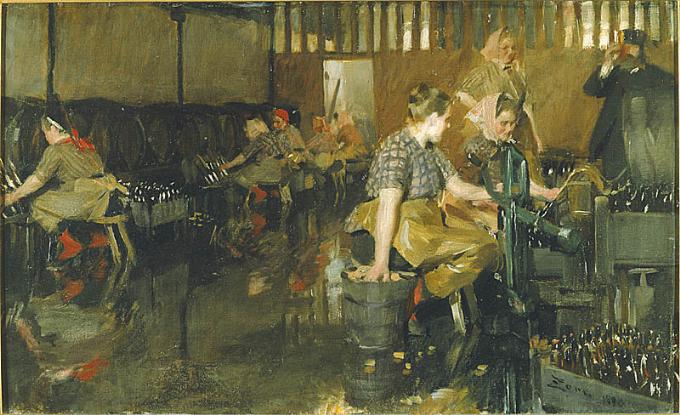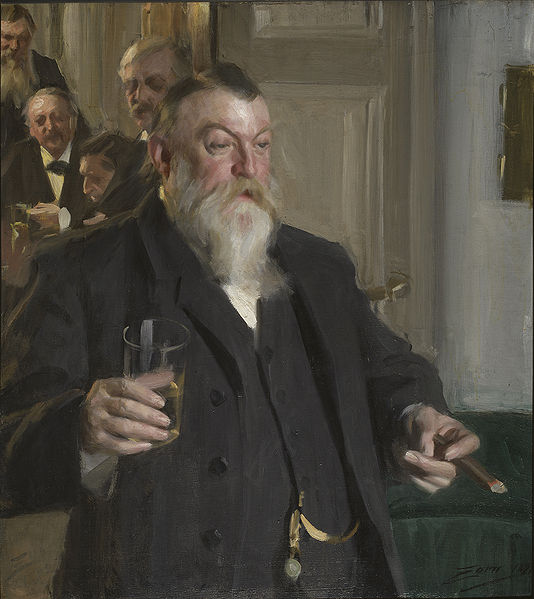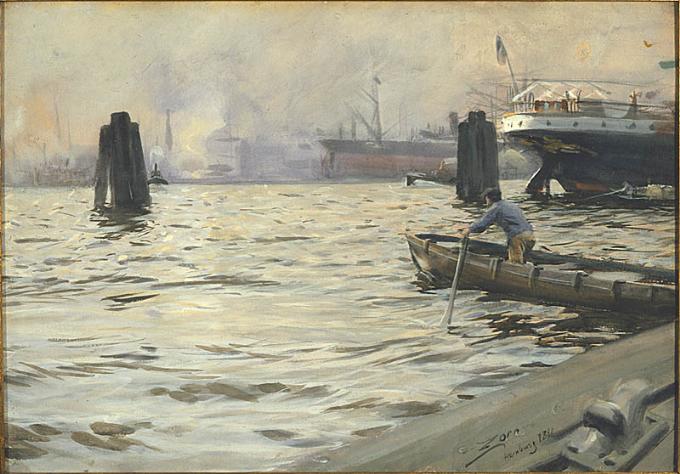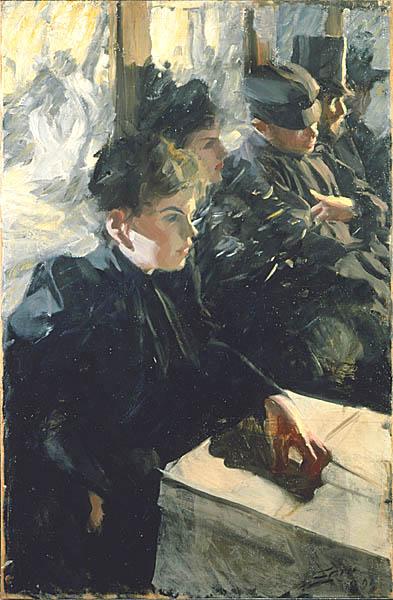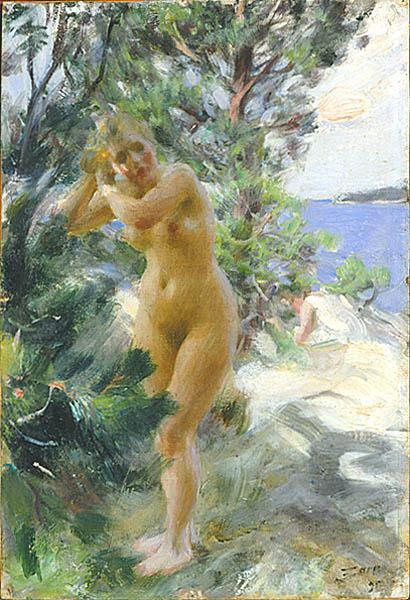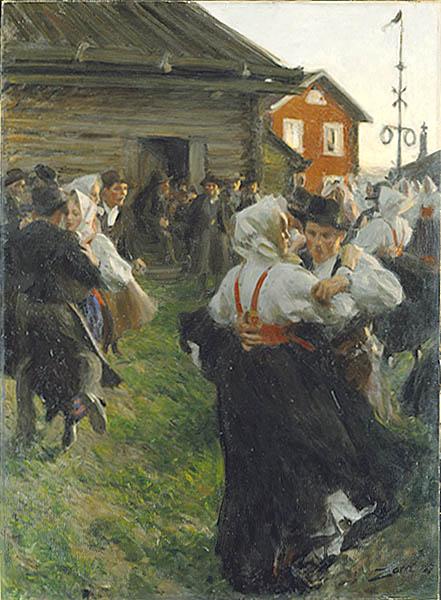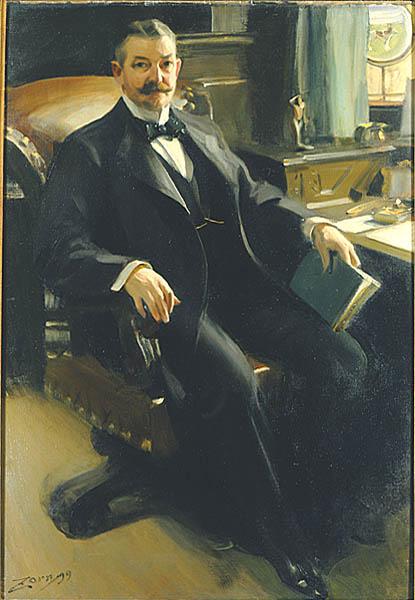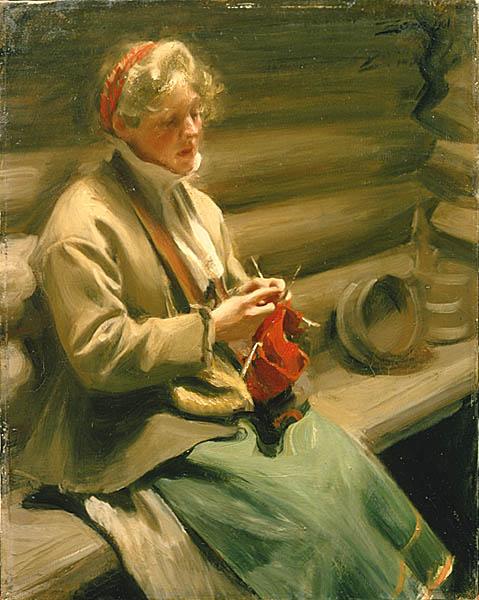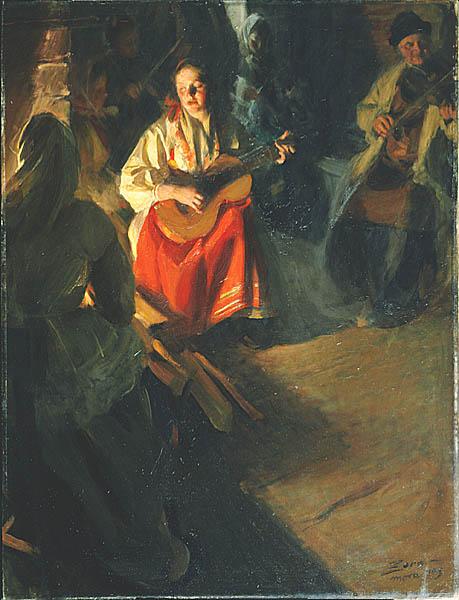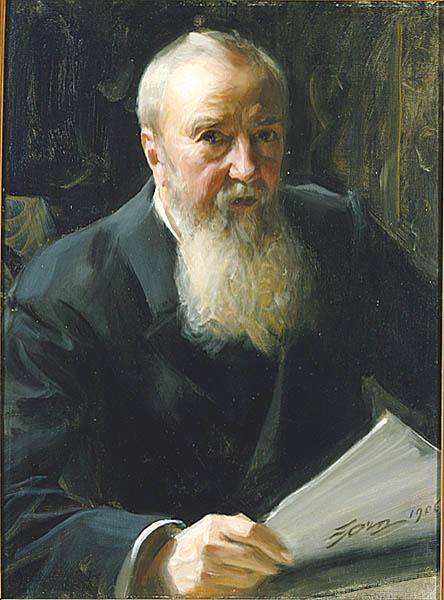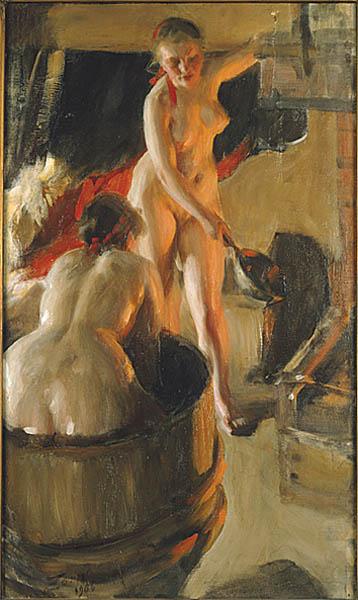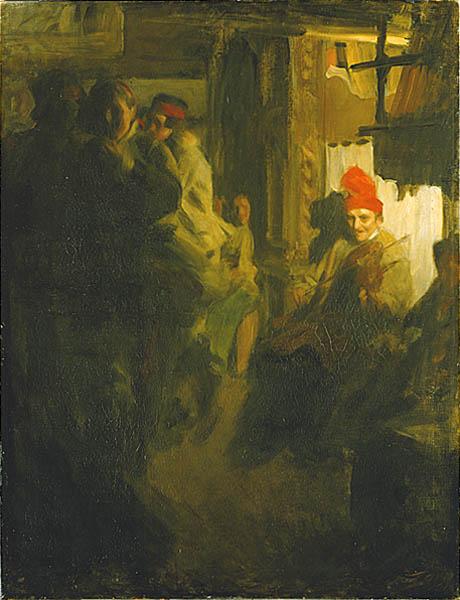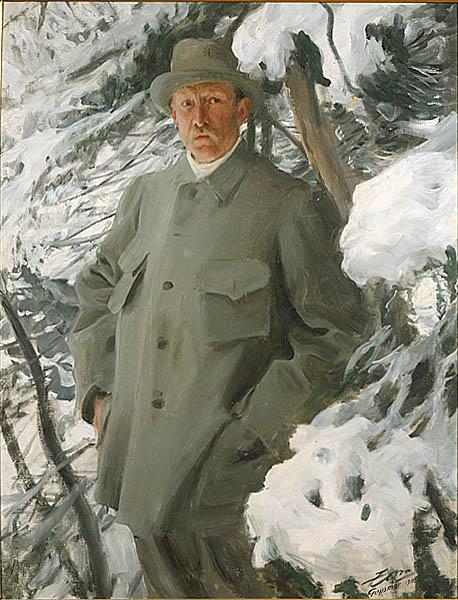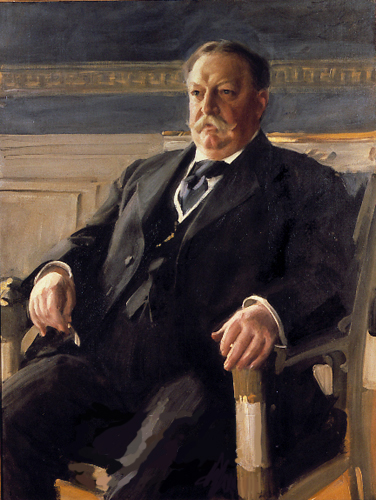<Back to Index>
- Inventor Harry Brearley, 1871
- Painter Anders Leonard Zorn, 1860
- Daimyo of Echigo Province Uesugi Kenshin, 1530
PAGE SPONSOR
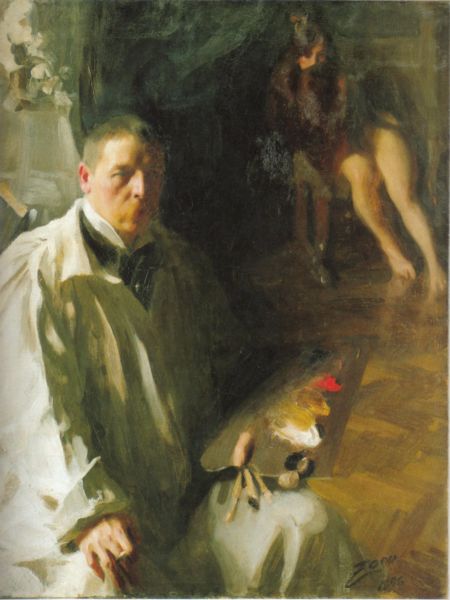
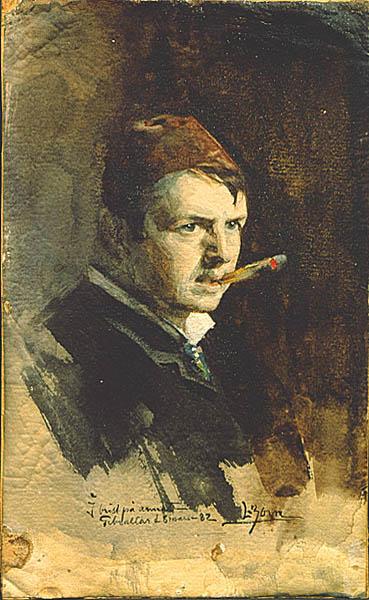
Anders Leonard Zorn (February 18, 1860 – August 22, 1920) was one of Sweden’s foremost artists who obtained international success as a painter, sculptor and printmaker in etching.
Zorn was born in Yvraden, a hamlet in the village of Utmeland in the parish of Mora, Dalarna, and was raised on his grandparents' farm in Yvraden. He studied at the age of twelve in the school at Mora Strand before progressing during the autumn of 1872 to a secondary grammar school in Enköping.
From 1875 – 1880 Zorn studied at Royal Swedish Academy of Arts in Stockholm, Sweden. He traveled extensively to London, Paris, the Balkans, Spain, Italy and the United States, becoming an international success as one of the most acclaimed painters of his era. While his early works were often brilliant, luminous watercolors, by 1887 he had switched firmly to oils. Zorn painted portraits, scenes depicting rustic life and customs. Zorn is also famous for his nude paintings and realistic depictions of water.
It was primarily his skill as a portrait painter that gained Zorn international acclaim based principally upon his incisive ability to depict the individual character of his model. His subjects included three American Presidents, one of whom was Grover Cleveland in 1899. At 29, he was made Chevalier of the Légion d'honneur at the Exposition Universelle 1889 Paris World Fair.
His
art made him wealthy and he was thus able to build up a considerable
collection of art. The objects were not only bought in his native
country but also during the many travels he made abroad. In their joint
will, Anders and Emma Zorn donated their entire holdings to the Swedish
State. Some of his most important works can be seen at the National Museum of Fine Arts (Swedish:Nationalmuseum) in Stockholm. Among them is Midsummer Dance (1897), a depiction of dancers in the evening light of a rural Midsummer Eve celebration. Other museums holding major works by Zorn include the Musée d'Orsay in Paris, the Metropolitan Museum of Art in New York, and the Museum of Fine Arts, Boston. The Zorn Collections (Swedish: Zornsamlingarna) located in Mora, is a museum dedicated to the works of Anders Zorn. It was designed by Ragnar Östberg and opened in 1939. In
1886, Anders Zorn and his wife Emma, had bought land close to Mora
church and here they moved a cottage from his maternal grandfather's
farm. When Anders and Emma Zorn decided to return to Sweden after
several years abroad, they began to enlarge the cottage.
Zorngården was completed in 1910. Zorngården
remains today much as it was at the time of Emma Zorn's death in 1942.
It is a fine example of an artist's home from the turn of the century.
With inspiration from English and Swedish architecture, it is today an
excellent example of the architectural freedom that characterizes the
years around 1900. The
main part of Zorngården consists of Zorn's home and a museum with
his art, but there are two other museums that also are part of the Zorn
Collection. Gammelgården is in the southern part of Mora and
consists of 40-something timber houses that Zorn bought to make sure
that the old art of building such houses would not be forgotten.
Gopsmor, Zorn's refuge when under stress, is in the municipality of Älvdalen and is only open for visitors in July.
